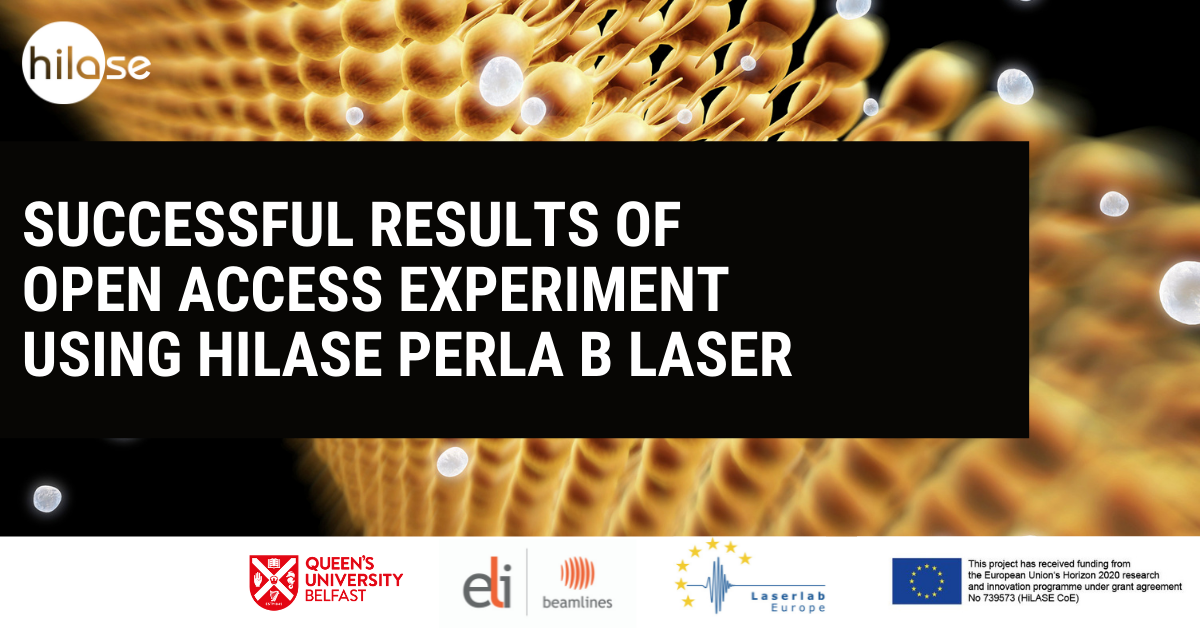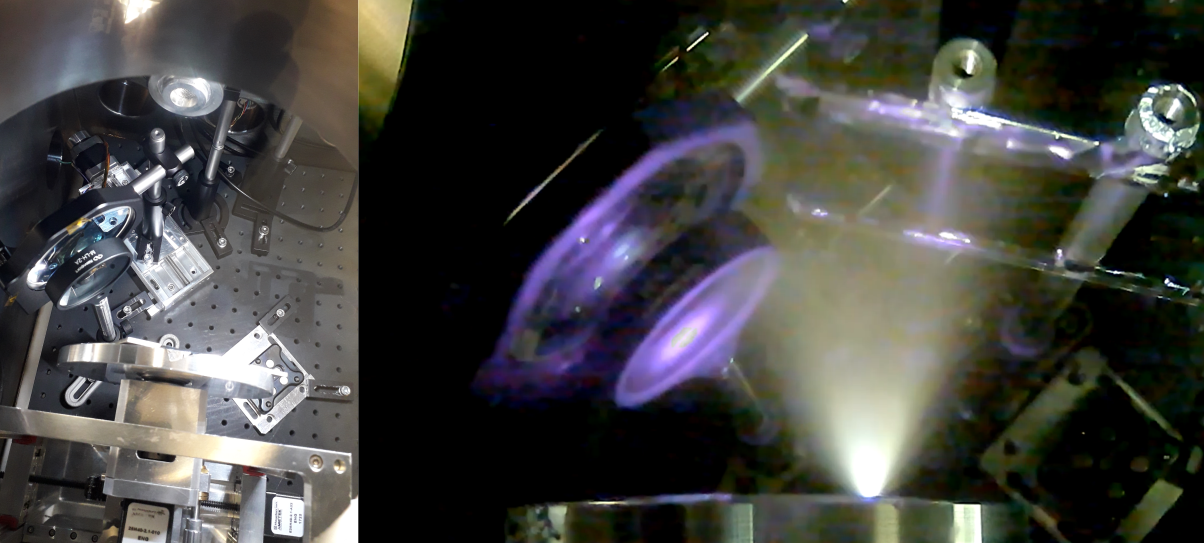In the frame of the HiLASE Open Access and Laserlab-Europe call, the team from Queen’s University of Belfast (UK) lead by Daniele Margarone in collaboration with ELI Beamlines (CZ) has successfully completed a 2-week experimental campaign at Perla-B which is one of the kHz user beamlines available at Hilase Centre (CZ).

After focusing the laser beam down to a few micrometers onto a plastic-coated boron nitride target, the energy of the accelerated proton bunches has been optimized, thus enabling the possibility to induce nuclear fusion reactions of hydrogen with boron nuclei, also known as “proton-boron” fusion. Such a nuclear reaction is completely clean since it produces only three alpha particles without radioactive products (neutron-free).
The repetition rate of the Perla-B laser has been increased up to 1kHz and a “continuous” alpha particle source has been generated from proton-boron fusion. This is the first proof-of-principle experiment to date which demonstrates the production of multi-MeV alpha-particle beams using a real table-top laser with peak power of only 10 GW, thus paving the way towards future multidisciplinary applications of such compact particle source.

Previous article → Acceleration of ions from solid targets at HiLASE Perla B laser
If you are interested in more information about the thin-disk compact laser system PERLA, please, visit its product page.
For information regarding Open Access click HERE.








